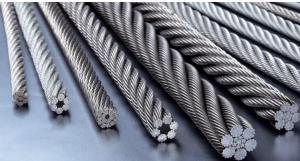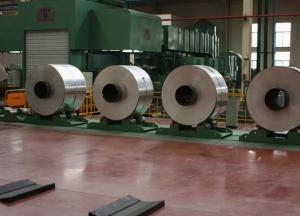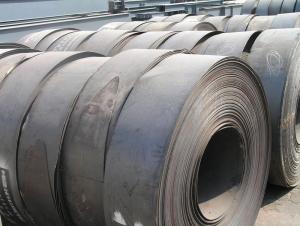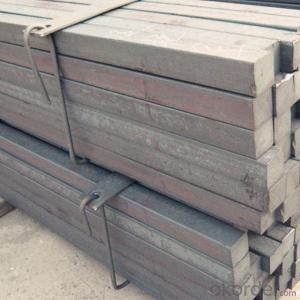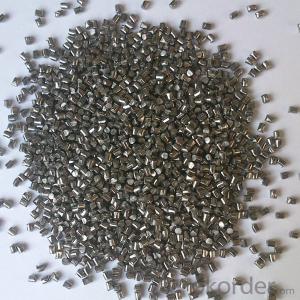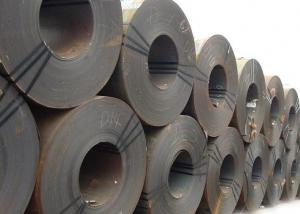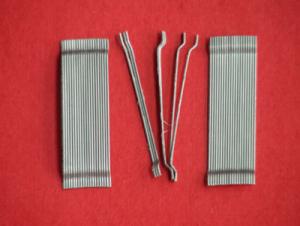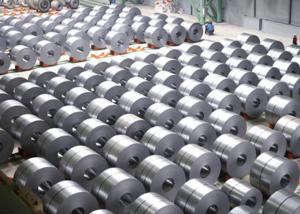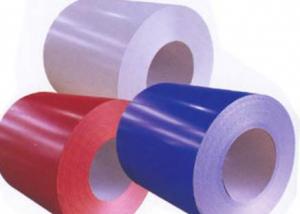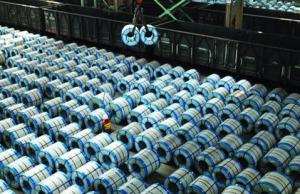High quality steel wire rope
- Loading Port:
- China Main Port
- Payment Terms:
- TT OR LC
- Min Order Qty:
- -
- Supply Capability:
- -
OKorder Service Pledge
OKorder Financial Service
You Might Also Like
A or a plurality of strands of fine steel wire twisted into a flexible rope, wire ropeis composed of several layers of steel wires are twisted into stocks, again with the rope core as the center, a certain number of strand wound into a spiralrope. In material handling machinery, used for lifting, traction, pulling andcarrying with. Steel wire rope has high strength, light weight, stable work, not easy to suddenly the whole root fracture, reliable work.
Steel wire
Steel wire rope to bear the load, its performance is mainly composed of a steel wire decision. Steel is carbon steel or alloy steel by cold drawing or cold rolledinto round (or special) wire, with very high strength and toughness, and according to the use of different environmental conditions on the steel wiresurface treatment.
Rope core
The main effect of rope core is to increase the elasticity and toughness ofsteel wire rope, steel wire, reduce friction and lubrication, improve the service life of wire rope. Commonly used rope core types include organic fiber (such as hemp, cotton), synthetic fiber, asbestos core (high temperature) or softmetal materials.
Classification
Edit
The steel wire rope according to the shape, level, classification of state etc..
Shape
The 1 round strand wire rope
2 braided wire rope
3 flat wire rope
State
The wire rope can also according to shares in the contact state between each layer of steel wire is divided into point contact, line contact or surface contact3.
Wire rope point contact: shares in wire diameter are the same. In order to make the steel stress is uniform, each layer of steel wire twisted around the rear spiral angle of approximately the same size, but the torque range, so the inner layer and the outer layer steel wire cross, in point contact state.
The line contact wire rope: each layer of steel wire strands of screw distance is equal, the inner layer and the outer layer steel wire in contact with each otherin a spiral line, a line contact state. Performance of linear contact lay wire ropes than point contact are greatly improved, so widely used.
The surface contact wire rope: a facial contact strands, the outer layer made of profiled steel wire with smooth surface, good wear resistance, compared with other types of wire rope of the same diameter, tensile strength is big, and can withstand the lateral pressure, but the flexibility is poor, complex process,high cost, often used as a carrying cable. Such as cable of cable crane andthe aerial ropeway.
- Q:What are the environmental impacts of steel production and the use of steel products?
- The environmental impacts of steel production and the use of steel products are significant. Steel production is a highly energy-intensive process that contributes to greenhouse gas emissions, primarily in the form of carbon dioxide. The extraction of raw materials, such as iron ore and coal, for steel production also leads to habitat destruction and deforestation. Additionally, steel production produces air pollutants including sulfur dioxide, nitrogen oxides, and particulate matter, which contribute to air pollution and respiratory problems. The process also generates large amounts of waste, such as slag and dust, which can contaminate soil and water sources if not properly managed. The use of steel products also has environmental implications. The manufacturing, transportation, and disposal of steel products contribute to carbon emissions and energy consumption. Furthermore, when steel products reach the end of their life cycle, improper disposal can result in waste accumulation in landfills. However, it is important to note that steel is a highly recyclable material, and recycling can significantly reduce the environmental impacts associated with its production. By promoting sustainable practices, such as using recycled steel and improving energy efficiency in production processes, we can mitigate the environmental impacts of steel production and use.
- Q:What are the different types of steel bars and their uses?
- There are several different types of steel bars, each with their own unique properties and uses. Some common types include mild steel bars, which are versatile and commonly used in construction projects; deformed steel bars, which have ridges or deformations to improve grip and are often used in reinforced concrete structures; stainless steel bars, which are corrosion-resistant and commonly used in food processing, chemical plants, and construction; and alloy steel bars, which have various alloying elements added to enhance their strength and durability, making them suitable for applications in machinery, automotive, and aerospace industries.
- Q:How is steel mesh used in construction?
- Steel mesh is commonly used in construction for reinforcing concrete structures. It is placed within the concrete to provide additional strength and prevent cracking or failure. The mesh helps distribute the load evenly, making the structure more durable and resistant to various forces such as tension and compression. Additionally, it can be used in constructing fences, partitions, or as a safety barrier.
- Q:How is steel used in the manufacturing of kitchen utensils?
- Steel is commonly used in the manufacturing of kitchen utensils due to its strength, durability, and resistance to corrosion. It is used to make various utensils such as knives, spoons, forks, and cookware. The versatility of steel allows for the production of sharp and long-lasting cutting edges, sturdy handles, and easy-to-clean surfaces, making it an ideal material for kitchen utensils.
- Q:What are the common types of steel products used in the pet training and behavior industry?
- The common types of steel products used in the pet training and behavior industry include metal crates and kennels, leash hooks and hangers, training collars, prong collars, and various types of training and exercise equipment such as agility tunnels, jumps, and weave poles.
- Q:How are steel pipes used in the transportation of natural gas?
- Steel pipes are used in the transportation of natural gas as they provide a reliable and durable means of transporting the gas over long distances. These pipes are designed to withstand high pressure and are resistant to corrosion, making them suitable for the transmission of natural gas. Additionally, steel pipes are able to maintain the integrity of the gas, ensuring minimal leakage and loss during transportation.
- Q:How are steel products used in the oil and gas industry?
- Steel products are extensively used in the oil and gas industry due to their durability and strength. They are utilized in various applications such as pipelines, drilling equipment, storage tanks, and offshore structures. Steel pipes are used to transport oil and gas over long distances, while steel tanks provide storage for these resources. Additionally, steel is used in the construction of drilling rigs, platforms, and other offshore facilities, as it can withstand harsh environmental conditions. Overall, steel products play a crucial role in ensuring the safe and efficient extraction, transportation, and storage of oil and gas.
- Q:How is steel used in the production of medical devices?
- Steel is used in the production of medical devices due to its strength, durability, and resistance to corrosion. It is commonly used for manufacturing surgical instruments, implants, and various medical equipment such as scalpel blades, forceps, needles, and stents. The properties of steel make it ideal for these applications as it provides reliability, precision, and ease of sterilization, ensuring the safety and effectiveness of medical devices used in patient care.
- Q:What are the different types of steel sheets and their applications?
- There are several different types of steel sheets, each with their own unique properties and applications. Some common types include hot rolled steel sheets, cold rolled steel sheets, galvanized steel sheets, and stainless steel sheets. Hot rolled steel sheets are typically used in construction and manufacturing industries due to their high strength and durability. They are commonly used for structural components, such as beams and columns, as well as for automotive and machinery parts. Cold rolled steel sheets are known for their smooth surface finish and tight dimensional tolerance. They are often used in applications that require precise shapes and sizes, such as appliances, furniture, and automotive body panels. Galvanized steel sheets are coated with a layer of zinc to prevent corrosion and rust. They are commonly used in outdoor structures, such as roofing and siding, as well as in automotive parts and electrical equipment. Stainless steel sheets are highly resistant to corrosion and staining, making them suitable for a wide range of applications. They are commonly used in kitchen appliances, food processing equipment, medical devices, and architectural structures. Overall, the choice of steel sheet depends on the specific requirements of the application, such as strength, finish, corrosion resistance, and cost.
- Q:How is steel used in the production of machinery and equipment?
- Steel is widely used in the production of machinery and equipment due to its exceptional strength, durability, and versatility. It is commonly used to manufacture components such as gears, shafts, frames, and casings, providing the necessary structural support and stability. Additionally, steel's ability to withstand high temperatures, corrosion, and wear makes it ideal for applications in heavy machinery, construction equipment, and industrial machinery. Overall, steel plays a crucial role in ensuring the reliability and efficiency of machinery and equipment in various industries.
1. Manufacturer Overview |
|
|---|---|
| Location | |
| Year Established | |
| Annual Output Value | |
| Main Markets | |
| Company Certifications | |
2. Manufacturer Certificates |
|
|---|---|
| a) Certification Name | |
| Range | |
| Reference | |
| Validity Period | |
3. Manufacturer Capability |
|
|---|---|
| a)Trade Capacity | |
| Nearest Port | |
| Export Percentage | |
| No.of Employees in Trade Department | |
| Language Spoken: | |
| b)Factory Information | |
| Factory Size: | |
| No. of Production Lines | |
| Contract Manufacturing | |
| Product Price Range | |
Send your message to us
High quality steel wire rope
- Loading Port:
- China Main Port
- Payment Terms:
- TT OR LC
- Min Order Qty:
- -
- Supply Capability:
- -
OKorder Service Pledge
OKorder Financial Service
Similar products
New products
Hot products
Related keywords
